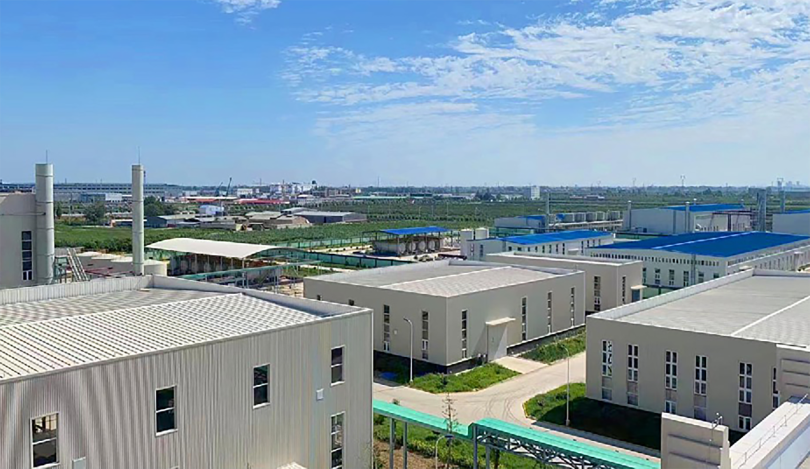
Oct . 22, 2024 04:18 Back to list
Hydroxypropyl Methylcellulose Applications and Benefits in Various Industries
Hydroxypropyl Methylcellulose (HPMC) A Versatile Polymer in Modern Applications
Hydroxypropyl Methylcellulose (HPMC) is a semi-synthetic polymer derived from cellulose, a natural polymer found in plant cell walls. This compound has garnered significant attention in various industries due to its unique properties and versatility. HPMC is primarily used as a thickening agent, emulsifier, film-former, and stabilizer, making it an essential ingredient in food, pharmaceuticals, cosmetics, and construction materials.
One of the most notable characteristics of HPMC is its solubility in water, a feature that sets it apart from traditional cellulose derivatives. HPMC readily dissolves in hot or cold water, transforming into a viscous solution. This property is particularly useful in applications requiring a controlled viscosity and texture. In the food industry, for example, HPMC is frequently employed as a thickener, improving the texture of sauces, soups, and dressings while ensuring a smooth mouthfeel. It can also act as a fat replacer, reducing caloric content without compromising the sensory attributes of food products.
Hydroxypropyl Methylcellulose (HPMC) A Versatile Polymer in Modern Applications
Cosmetic companies also leverage the unique properties of HPMC to create high-quality products. In personal care formulations, it acts as a thickener and stabilizer, ensuring the desired consistency and texture. HPMC is found in lotions, creams, shampoos, and other cosmetic products, where it enhances the sensory experience for consumers. Its film-forming ability provides a pleasant feel on the skin and contributes to the product's overall performance, creating a moisture-retaining layer that leaves skin feeling hydrated.
hydroxypropyl methylcellulose hpmc

Beyond food and pharmaceuticals, HPMC has made significant inroads into the construction industry. It is commonly added to cement-based products like adhesives, tile grouts, and wall putty to improve workability and extend open time. By enhancing the viscosity of these materials, HPMC allows for better adhesion, easier application, and improved water retention, which are crucial properties for successful construction projects. This application is particularly valuable in regions with high humidity levels, where maintaining optimal moisture levels during drying is essential.
Sustainability is another aspect that draws interest towards HPMC. Being derived from renewable cellulose sources, HPMC presents a more sustainable alternative to some synthetic polymers. As the global demand for sustainable materials increases, industries are more inclined to explore natural and semi-synthetic options that are versatile yet environmentally friendly. HPMC fits within this framework, offering performance without compromising ecological principles.
In terms of safety, HPMC is recognized as safe for use in various applications. Regulatory bodies such as the FDA and the European Food Safety Authority have assessed HPMC's safety profile, confirming its non-toxic status. This aspect plays a pivotal role, especially in food and pharmaceutical applications, where consumer safety is paramount.
Looking ahead, the market for HPMC is expected to grow substantially, driven by advancements in technology and increasing consumer demand for efficient and effective products. Researchers are continually studying new formulations and applications of HPMC, exploring opportunities for enhanced performance and novel uses. This groundwork lays the foundation for HPMC to play an even more integral role in innovative solutions across multiple sectors.
In conclusion, Hydroxypropyl Methylcellulose (HPMC) is a multifaceted polymer that has solidified its presence in a wide range of industries. Its unique properties—solubility in water, thickening ability, and emulsifying characteristics—make it an indispensable ingredient in food, pharmaceuticals, cosmetics, and construction. As sustainability and safety become increasingly important considerations, HPMC stands out as a promising material that meets modern demands while adhering to ecological practices. With ongoing research and development, the future of HPMC appears bright, as it continues to contribute to advancements across various sectors, proving its worth as a versatile and valuable polymer.
-
Unlocking the Benefits of HPMC Products: A Gateway to Versatile Applications
NewsAug.07,2025
-
Unleashing the Potential of HPMC Ashland: A Comprehensive Look
NewsAug.07,2025
-
Tile Bonding Cellulose: The Key to Superior Adhesion and Durability
NewsAug.07,2025
-
Hydroxypropyl Methylcellulose Powder: The Versatile Component in Modern Pharmaceuticals
NewsAug.07,2025
-
Hydroxyethyl Cellulose: The Versatile Solution for Various Industries
NewsAug.07,2025
-
Hydroxyethyl Cellulose (HEC): The Versatile Polymer for Various Applications
NewsAug.07,2025







